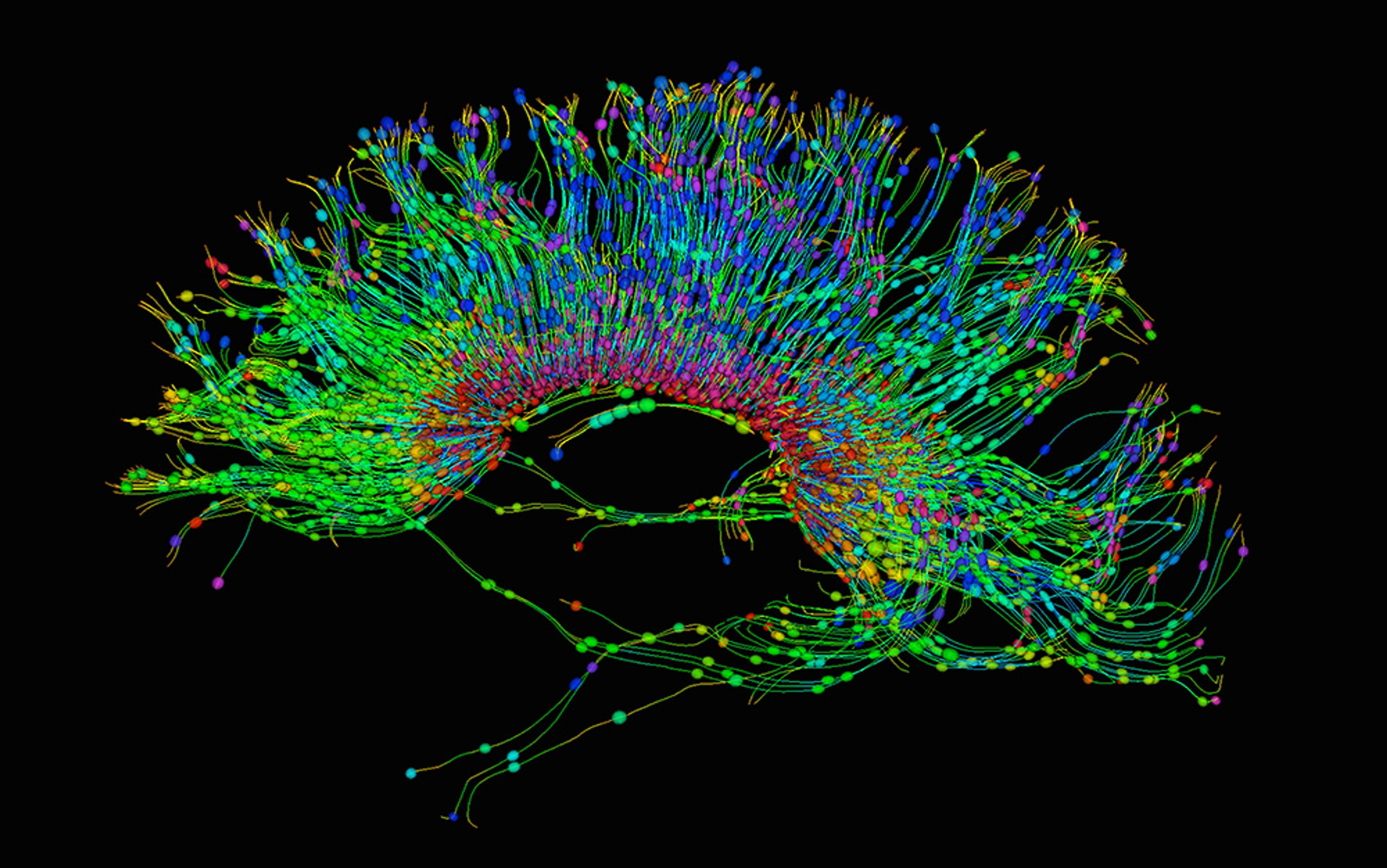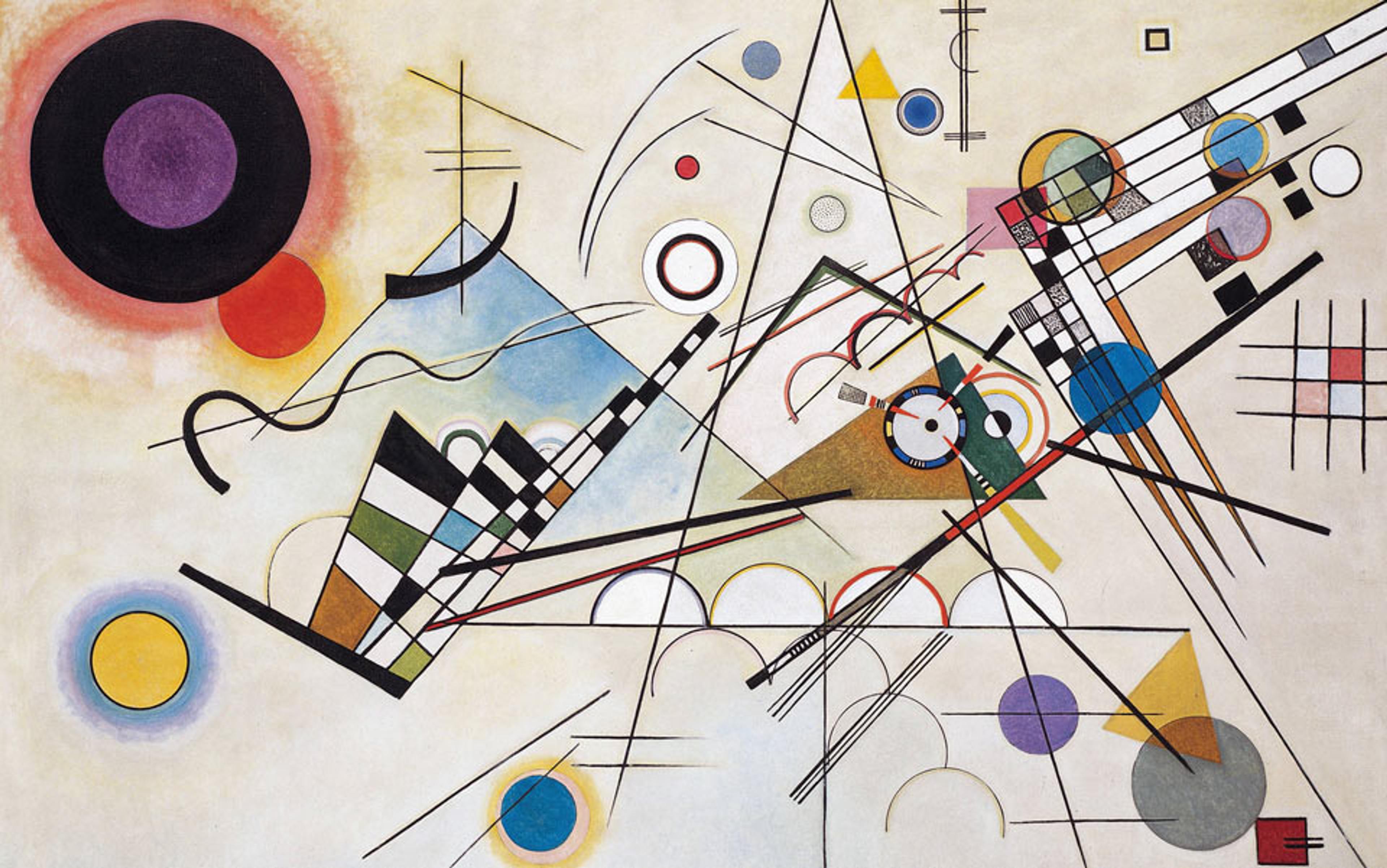Despite his many intellectual achievements, I suspect there are some concepts my dog cannot conceive of, or even contemplate. He can sit on command and fetch a ball, but I suspect that he cannot imagine that the metal can containing his food is made from processed rocks. I suspect he cannot imagine that the slowly lengthening white lines in the sky are produced by machines also made from rocks like his cans of dog food. I suspect he cannot imagine that these flying repurposed dog food cans in the sky look so small only because they are so high up. And I wonder: is there any way that my dog could know that these ideas even exist? It doesn’t take long for this question to spread elsewhere. Soon I start to wonder about concepts that I don’t know exist: concepts whose existence I can never even suspect, let alone contemplate. What can I ever know about that which lies beyond the limits of what I can even imagine?
Attempting to answer this question only leads us to more questions. In this essay, I’m going to run through a sequence of 10 queries that provide insight into how we might begin conceiving of what’s at stake in such a question and how to answer it – and there is much at stake. The question of what we can know of that which lies beyond the limits of our imagination is partially about the biological function of intelligence, and partially about our greatest cognitive prostheses, particularly human language and mathematics. It’s also about the possibility of a physical reality that far exceeds our own, or endless simulated realities running in the computers of advanced nonhuman lifeforms. And it’s about our technological progeny, those ‘children’ who will one day cognitively eclipse us. From the perspective of my 10 queries, human exceptionalism becomes very shaky. Perhaps we are more like dogs (or single-celled paramecia) than we’d care to admit. Though human history is filled with rhapsodic testimony to human ingenuity and intelligence, this sequence of questions paints a different picture: I want to emphasise how horribly, and perhaps horrifyingly, limited and limiting our achievements are – our language, science, and mathematics.
And so, the first question in the sequence is simple:
1. On some ill-defined objective scale, are we smart or are we stupid?
For vast stretches of time, the highest level of intelligence on Earth seems to have increased very slowly, at best. Even now, our brains process sensory-motor information using all kinds of algorithmic shenanigans that allow us to do as little actual thinking as possible. This suggests that the costs associated with intelligence are high. It turns out that brains are extraordinarily expensive metabolically on a per-unit-mass basis, far more than almost all other organs (the heart and liver being the exceptions). So, the smarter an organism is, the more food it needs, or it dies. Evolutionarily speaking, it is stupid to be smart.
We do not have a good understanding of exactly how our neural hardware grants us abstract intelligence. We do not understand how ‘brain makes mind’. But given that more intelligence requires more brain mass, which results in more metabolic costs, one would expect us to have the lowest possible level of abstract intelligence required for surviving in the precise ecological niche in which Homo sapiens developed: the barest minimum intelligence needed to scrape through a few million years of hunting and gathering until we got lucky and stumbled into the Neolithic Revolution.
Is this conclusion correct? To gain insight into the question of whether we’re smart or stupid, note that there are multiple types of intelligence. The ability to sense the external world is one such type of cognitive capability; the ability to remember past events is another; the ability to plan a future sequence of actions is another. And there are myriad cognitive capabilities that other organisms have but that we lack. This is true even if we consider only intelligences that we have created: modern digital computers vastly outperform us computationally in myriad ways. Moreover, the small set of those cognitive tasks that we can still perform better than our digital computers is substantially shrinking from year to year.
Maybe our mathematics can capture only a tiny sliver of reality
This will continue to change. The capabilities of future terrestrial organisms will likely exceed the current level of our digitally augmented intelligence. This sense of cognitive expansion is not unique to our current moment in history. Think about the collective cognitive capability of all organisms living on Earth. Imagine a graph showing this collective capability changing over billions of years. Arguably, no matter what precise time-series analysis technique we use, and no matter how we formalise ‘cognitive capability’, we will conclude that the trend line has a strictly positive slope. After all, in no period has the highest level of some specific cognitive capability held by any entity in the terrestrial biosphere shrunk; the entire biosphere has never lost the ability to engage in certain kinds of cognitive capability. Also, there is not just growth over time in the degree of each cognitive capability among all terrestrial species, but a growth in the kinds of cognitive capability. Life has become only smarter, and smarter in different ways. If we simply extrapolate this trend into the future, we’re forced to conclude that some future organisms will have cognitive capabilities that no currently living Terran species has – including us.
Despite preening in front of our collective mirror about how smart we are, it seems that we have highly limited cognitive abilities compared with those that we (or other Terran organisms) will have in the future.
However, before getting too comfortable with this conclusion, we need to look a little closer at our graph of collective capability. Up until around 50,000 years ago, the collective intelligence on Earth was increasing gradually and smoothly. But then there was a major jump as modern Homo sapiens started on a trajectory that would ultimately produce modern science, art and philosophy. It may appear as though we are still part of this ‘major jump’, this vast cognitive acceleration, and that our kinds of intelligence far exceed those of our hominin ancestors.
2. Why does there appear to be a major chasm between the cognitive capabilities of our hominin ancestors and the cognitive capabilities of modern scientists, artists and philosophers?
There is no evident fitness benefit for a savannah-forged hairless ape to be able to extract from the deepest layers of physical reality cognitive palaces like the Standard Model of particle physics, Chaitin’s incompleteness theorem, or the Zen parable ‘Ten Verses on Oxherding’. In fact, there are likely major fitness costs to having such abilities. So why do we have them?
To grapple with this, it’s helpful to focus on the most universal of humanity’s achievements, the most graphic demonstrations of our cognitive abilities: our science and mathematics. Our ability to exploit science and mathematics has provided us with cognitive prostheses and extended minds, from printing presses to artificial intelligences. Furthermore, the capabilities of those extended minds have been greatly magnified over time by the cumulative collective process of culture and technological development. In turn, these extended minds have accelerated the development of culture and technology. This feedback loop has allowed us to expand our cognitive capabilities far beyond those generated solely by genotypic evolution. The loop may even be the cause of the chasm between the cognitive capabilities of our hominin ancestors and the cognitive capabilities of the modern scientists, artists and philosophers.
Though the feedback loop has inflated our original cognitive capabilities (those generated by genotypic evolution), it is not clear that it has provided us with any wholly new cognitive capabilities. In fact, it might never be able to. Perhaps future forms of science and mathematics, generated via the feedback loop, will be forever constrained by the set of cognitive capabilities we had when we first started running the loop.
This suggests a different kind of resolution to the ‘chasm’ between the cognitive abilities of our hominin ancestors and those of modern humans. Maybe the gap is not really a chasm at all. Perhaps it is more accurately described as a small divot in a vast field of possible knowledge. In an article titled ‘The Unreasonable Effectiveness of Mathematics in the Natural Sciences’ (1960), the Hungarian-American theoretical physicist Eugene Wigner asked why our mathematical theories ‘work so well’ at capturing the nature of our physical reality. Maybe the answer to Wigner’s question is that our mathematics isn’t very effective at all. Maybe our mathematics can capture only a tiny sliver of reality. Perhaps the reason it appears to us to be so effective is because our range of vision is restricted to that sliver, to those few aspects of reality that we can conceive of.
The interesting question is not why our augmented minds seem to have abilities greater than those necessary for the survival of our ancestors. Rather, it’s whether our augmented minds will ever have the minimal abilities necessary for grasping reality.
3. Even aided by our extended minds, can we ever create entirely new forms of science and mathematics that could access aspects of physical reality beyond our conception, or are we forever limited to merely developing the forms we already have?
In 1927, an earlier version of this question was suggested by the English scientist John Burdon Sanderson Haldane in his book of essays Possible Worlds. ‘Now, my own suspicion,’ he wrote, ‘is that the universe is not only queerer than we suppose, but queerer than we can suppose.’ In the years that followed, similar verbal baubles suggested that the Universe may be ‘stranger’ or ‘odder’ than we can ‘imagine’ or ‘conceive’. But, having other fish to fry, the authors of these early texts rarely fleshed out what they meant. They often implied that the Universe may be stranger than we can currently imagine due to limitations in current scientific understanding, rather than inherent limitations of what we can ever do with future efflorescences of our minds. Haldane, for example, believed that once we embraced ‘different points of view’, reality would open itself to us: ‘one day man will be able to do in reality what in this essay I have done in jest, namely, to look at existence from the point of view of non-human minds.’
In the decades since, other forms of this question have appeared in academic literature – mostly in studies of the ‘hard problem of consciousness’ and the closely related ‘mind-body problem’. This work on consciousness and minds has echoed Haldane by chasing the point of view of octopuses, viruses, insects, plants, and even entire ecosystems in the search for intelligence beyond the human.
The question of whether we are in a simulation or not is actually rather trivial
Many of these investigations have been informal, reflecting the squishy, hard-to-pin-down nature of the ‘hard problem of consciousness’. Fortunately, we can approach the underlying question of whether we can think beyond our current limits in a more rigorous manner. Consider the recently (re)popularised idea that our physical universe might be a simulation produced in a computer operated by some super-sophisticated race of aliens. This idea can be extended ad infinitum: perhaps the aliens simulating our universe might themselves be a simulation in the computer of some even more sophisticated species in a sequence of ever-more sophisticated aliens. Going in the other direction, in the not-too-distant future we might produce our own simulation of a universe, complete with entities who have ‘cognitive capabilities’. Perhaps those simulated entities can produce their own simulated universe, and so on and so on. The result would be a sequence of species, each running a computer simulation that produces the one just below it, with us somewhere in the sequence.
This question of whether we are in a simulation or not is actually rather trivial: yes, in some universes we are a simulation, and no, in some other universes we are not. For argument’s sake though, let’s restrict attention to universes in which we are indeed simulated. This leads us to our next question.
4. Is it possible for an entity that exists only in a computer simulation to run an accurate computer simulation of the ‘higher’ entity that simulated them?
If the answer is ‘no’, then whatever we contemplate in our universe is only a small subset of what can be known by those who reside higher in the sequence of more complex simulations. And if the answer is ‘no’, it would mean that there are deep aspects of reality that we cannot even imagine.
Of course, the answer to this question depends on the precise definitions of terms such as ‘simulation’ and ‘computer’. Formal systems theory and computer science provide many theorems that suggest that, whatever definitions we adopt, the answer to the question is indeed ‘no’. However, rather than expounding on these theorems that suggest our cognitive abilities are limited, I’d like to take a step back. These theorems are examples of the content of our mathematics, examples of our mathematical ability and ideas. Much of this content already suggests our cognitive abilities are too limited to fully engage with reality. But what about other aspects of our mathematics?
5. Does the form, rather than the content, of our science and mathematics suggest that the cognitive abilities of humans are also severely constrained?
Open any mathematics textbook and you’ll see equations linked by explanatory sentences. Human mathematics is really the sum total of every equation and explanatory sentence inside every mathematics textbook ever written.
Now notice that each of those sentences and equations is a finite sequence of marks on the page, a finite sequence of visual symbols consisting of the 52 letters of the Latin alphabet, as well as special symbols such as + and =. For example, 1 + 1 + y = 2x is a sequence of eight elements from a finite set of marks. What we call ‘mathematical proofs’ are strings of such finite sequences strung together.
This feature of human mathematics has implications for an understanding of reality in the broadest sense. To paraphrase Galileo, all our current knowledge about physics – our formal understanding of the foundations of physical reality – is written in the language of mathematics. Even the less formal sciences are still structured in terms of human language, using finite strings of symbols, like mathematics. This is the form of our knowledge. Our understanding of reality is nothing more than a large set of finite string sequences, each containing elements from a finite set of possible symbols.
Note that any sequence of marks on a page has no more meaning in and of itself than the sequences one might find in the entrails of a sacrificed sheep, or in the pattern of cracks in a heated tortoise shell. This observation isn’t new. Much work in philosophy is a reaction to this observation that our science and mathematics is just a set of finite sequences of symbols with no inherent meaning. This work tries to formalise the precise way that such finite sequences might refer to something outside of themselves – the so-called ‘symbol-grounding problem’ in cognitive science and philosophy. The field of mathematics has reacted to this observation in a similar way, expanding formal logic to include modern model theory (the study of the relationships between sentences and the models they describe) and metamathematics (the study of mathematics using mathematics).
What is truly stunning about the fact that modern science and mathematics are formulated through a sequence of marks is its exclusivity: nothing other than these finite sequences of symbols is ever found in modern mathematical reasoning.
6. Are these finite strings of symbol sequences – the form of our mathematics and languages – necessary features of physical reality, or do they instead reflect the limits of our ability to formalise aspects of reality?
This question immediately gives rise to another:
7. How would our perception of reality change if human mathematics were expanded to include infinite strings of symbol sequences?
Infinite proofs with an infinite number of lines would never reach their conclusion in finite time, if evaluated at a finite speed. To reach their conclusion in finite time, our cognitive abilities would need to implement some kind of ‘hypercomputation’ or ‘super-Turing computing’, which are fancy ways of referring to speculative computers more powerful than any we can currently construct. (An example of a hypercomputer is a computer on a rocket that approaches the speed of light, and so exploits relativistic time dilation to squeeze an arbitrarily large amount of computation into a finite amount of time.)
But even with hypercomputation, this suggested extension of our current form of mathematics would still be presented in terms of human mathematics. What would a mathematics be like whose very form could not be described using a finite sequence of symbols from a finite alphabet?
The American philosopher Daniel Dennett and others have pointed out that the form of human mathematics, and of our sciences more generally, just happens to exactly coincide with the form of human language. Indeed, starting with Ludwig Wittgenstein, it has become commonplace to identify mathematics as a special case of human language, with its own kind of grammar like that which arises in human conversation.
I marvel at the limits of human language, and the fact that these limitations appear to be universal
The design of inter-human communication matches that of formal logic and Turing-machine theory. Some philosophers have taken this as a wonderful stroke of fortune. We happen to have a cognitive prosthesis – human language – capable of capturing formal logic. They presume this means we are also capable of fully capturing the laws of the physical universe.
A cynic might comment, with heavy irony: ‘How lucky can you get? Humans have exactly the cognitive capabilities needed to capture all aspects of physical reality, and not a drop more!’ A cynic might also wonder whether an ant, who is only capable of formulating the ‘rules of the Universe’ in terms of pheromone trails, would conclude that it is a great stroke of fortune that ants happen to have the cognitive capability of doing precisely that; or whether a phototropic plant would conclude that it is a stroke of fortune that they happen to have the cognitive capability to track the Sun, since that must mean that they can formulate the rules of the Universe.
Linguists such as Noam Chomsky and others have marvelled at the fact that human language allows recursion, that we can produce arbitrary sequences of symbols from a finite alphabet. They marvel at the fact that humans can create what appears to be an apparently amazingly large set of human languages. But I marvel at the limits of human language. I marvel at the limits of our science and mathematics. And I marvel at the fact that these limitations appear to be universal.
8. Is it a lucky coincidence that mathematical and physical reality can be formulated in terms of our current cognitive abilities, or is it just that, tautologically, we cannot conceive of any aspects of mathematical and physical reality that cannot be formulated in terms of our cognitive capabilities?
Consider a single-celled, oblong paramecium, the kind that float in oceans or stagnant pools. It may seem obvious, but a paramecium – like my dog – cannot conceive of the concept of a ‘question’ concerning issues that have no direct impact on its behaviour. A paramecium cannot understand the possible answers we have considered for our questions concerning reality, but neither would it understand the questions themselves. More fundamentally, though, no paramecium can even conceive of the possibility of posing a question concerning physical reality. Insofar as the cognitive concept of questions and answers might be a crucial tool to any understanding of physical reality, a paramecium lacks the tools needed to understand physical reality. It presumably does not even understand what ‘understanding reality’ means, in the sense that we are using the term. Ultimately, this is due to limitations in the kind of cognitive capabilities paramecia possess. But are we so different? We almost surely have similar kinds of limitations in terms of our cognitive capabilities. So, the penultimate (and ironically self-referential) question in this essay is:
9. Just as the notion of a question is forever beyond a paramecium, are there cognitive constructs that are necessary for understanding physical reality, but that remain unimaginable due to the limitations of our brains?
It may help to clarify this question by emphasising what it is not. This question does not concern limitations on what we can know about what it is that we can never know. We can conceive of many things even if they can never be ‘known’. But among those things that we can never know is a strictly smaller subset of things that we cannot imagine. The issue is what we can ever perceive of that smaller set.
For example, we can conceive of other branches of the many worlds of quantum mechanics, even if we cannot know what happens in those branches. I am not here concerned with this kind of unknowable. Nor am I concerned with values of variables that are unknown to us simply because we cannot directly observe them, such as the variables of events outside our Hubble sphere, or events within the event horizon of a black hole. These events can never be known to us for the simple reason that our ancillary engineering capabilities are not up to the task, not for any reasons intrinsic to limitations of the science and maths our minds can construct. They can be known, but we cannot find a path to such knowledge.
The concern here is what kinds of unknowable cognitive constructs might exist that we can never even be aware of, never mind describe (or implement).
It seems likely that our successors will have a larger set of things they can imagine than our own
The paramecium cannot even conceive of the cognitive construct of a ‘question’ in the first place, never mind formulate or answer a question. I wish to draw attention to the issue of whether there are cognitive constructs that we cannot conceive of but that are as crucial to understanding physical reality as the simple construct of a question. I am emphasising the possibility of things that are knowable, but not to us, because we are not capable of conceiving of that kind of knowledge in the first place.
This returns us to an issue that was briefly discussed above, of how the set of what-we-can-imagine might evolve in the future. Suppose that what-can-be-known-but-not-even-conceived-of is non-empty. Suppose we can know something about that which we truly can’t imagine.
10. Is there any way that we could imagine testing whether our future science and mathematics can fully capture physical reality?
From a certain perspective, this question might appear to be a scientific version of a conspiracy theory, writ large. One might argue that it is not so different to other grand unsolvable questions. We also can’t prove that ghosts don’t exist, either theoretically or empirically; nor that Marduk, the patron god of ancient Babylon, doesn’t really pull the strings in human affairs. However, there are at least three reasons to suspect that we actually can find the answer to (some aspects of) the question. Firstly, we could make some inroads if we ever constructed a hypercomputer and exploited it to consider the question of what knowledge is beyond us. More speculatively, as our cognitive abilities grow, we might be able to establish the existence of what we can never conceive of through observation, simulation, theory or some other process. In other words, it may be that the feedback loop between our extended minds and our technology does let us break free of the evolutionary accident that formed our hominin ancestors’ brains. Second, suppose we encounter extraterrestrial intelligence and can plug into, for example, some vast galaxy-wide web of interspecies discourse, containing a cosmic repository of questions and answers. To determine whether there are aspects of physical reality that are knowable but that humans cannot even conceive of might require nothing more than posing that question to the cosmic forum, and then learning the answers that are shared.
Consider our evolutionary progeny in the broadest sense: not just future variants of our species that evolve from us via conventional neo-Darwinian evolution, but future members of any species that we consciously design, organic or inorganic (or both). It seems quite likely that the minds of such successors will have a larger set of things they can imagine than our own.
It also seems likely that these cognitively superior ‘children’ of ours will be here within the next century. Presumably we will go extinct soon after their arrival (like all good parents making way for their children). So, as one of our last acts on our way out the door, as we gaze up at our successors in open-mouthed wonder, we can simply ask our questions of them.
Parts of this essay were adapted from the article ‘What Can We Know About That Which We Cannot Even Imagine?’ (2022) by David Wolpert.
Published in association with the Santa Fe Institute, an Aeon Strategic Partner.






